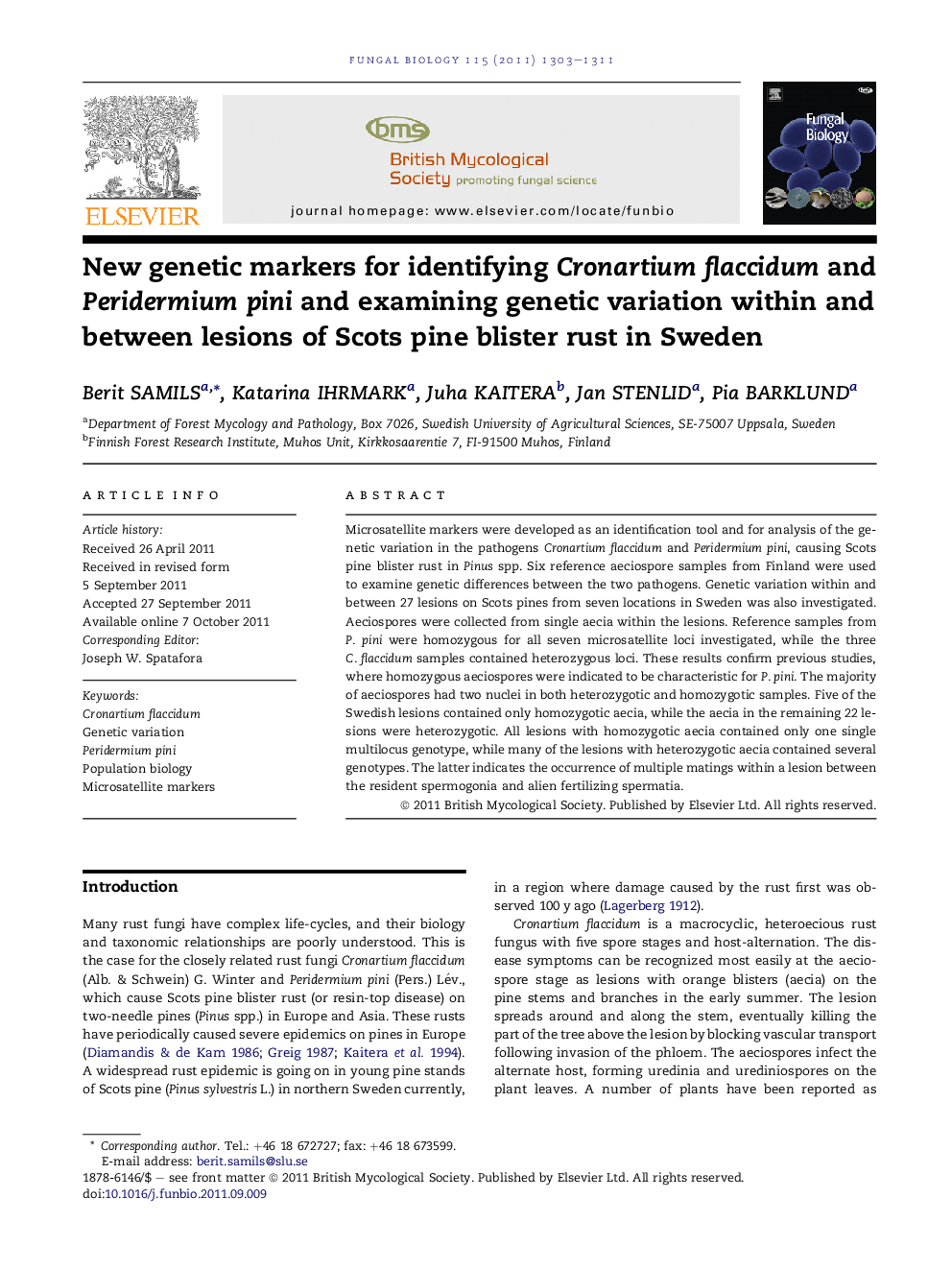| Article ID | Journal | Published Year | Pages | File Type |
|---|---|---|---|---|
| 4357319 | Fungal Biology | 2011 | 9 Pages |
Microsatellite markers were developed as an identification tool and for analysis of the genetic variation in the pathogens Cronartium flaccidum and Peridermium pini, causing Scots pine blister rust in Pinus spp. Six reference aeciospore samples from Finland were used to examine genetic differences between the two pathogens. Genetic variation within and between 27 lesions on Scots pines from seven locations in Sweden was also investigated. Aeciospores were collected from single aecia within the lesions. Reference samples from P. pini were homozygous for all seven microsatellite loci investigated, while the three C. flaccidum samples contained heterozygous loci. These results confirm previous studies, where homozygous aeciospores were indicated to be characteristic for P. pini. The majority of aeciospores had two nuclei in both heterozygotic and homozygotic samples. Five of the Swedish lesions contained only homozygotic aecia, while the aecia in the remaining 22 lesions were heterozygotic. All lesions with homozygotic aecia contained only one single multilocus genotype, while many of the lesions with heterozygotic aecia contained several genotypes. The latter indicates the occurrence of multiple matings within a lesion between the resident spermogonia and alien fertilizing spermatia.
► Genetic variation in the pine pathogens Cronartium flaccidum and Peridermium pini. ► Homozygous aeciospores were characteristic for P. pini but not C. flaccidum. ► Aecia within P. pini lesions always had identical genotypes. ► Evidence of multiple matings within lesions of C. flaccidum.
